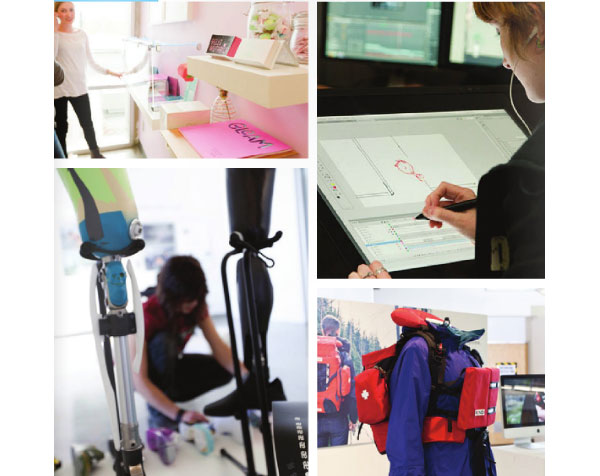
As an undergraduate architecture student, I once had a professor tell me that I should stop focusing so much on what my project “means” and just try to make it “look cool”. He cited a few “starchitect” projects as examples. I was shocked. I couldn’t believe all of the research and theory I was offering was being dismissed in favor of something that merely looks good, something that sells.
At the same time, it’s fair to say that during that particular project I had spent too much time on reading and discourse, and not enough on the design practice of my project. I realized then that finding a way to closely connect research and design is not an easy thing to accomplish and that often one is prioritized over the other.
Fortunately, many design practices are beginning to reject this traditional separation of research and design – a shift that Emily Carr’s new Master of Design program is striving to take the lead in.
Opening its doors to new students in Fall 2014, Emily Carr is officially offering the first Master of Design program in British Columbia, and with it, a fresh perspective on how to approach today’s design challenges. Bonne Zabolotney, the Dean of Design and Dynamic Media, explained to me that the new program’s focus is on the “cultural value of the design work rather than its commodification”. This means less emphasis on marketing and more emphasis on research that goes beyond secondary sources. The program encourages more participatory methods that require working closely with the people that could benefit from the design outcome in a meaningful way.
Some of the studies the program offers are Health Design, Recreation Design, Sustainable Design, Communication Design, Product Design, Soft Product Design, Industrial Design, and Service Systems Design, all of which prioritize working within a meaningful context. Many of these, such as Health Design, are also quite new to design education. Such new types of design inevitably call for research, but there may not be a lot of it out there. Thus, first hand research becomes absolutely necessary.
For instance the “Health Design Lab” that the program has created could not operate on a more traditional curricular structure, as it requires a whole new range of understanding, critical thought, and a technological approach that can only be obtained through new research. While explaining this, Dean Zabolotney also explicitly stated that the program is about studio and practice-based work. For such new types of design, it becomes clear that research is at the very core of this practical work, and unlike in the past, research and design cannot be separated from each other.
Current students (who have transitioned from other subjects within the university) are working on questions that exemplify the use of research and explore a broad range of design. A few examples are: a project on new ways to promote local food consumption, another on developing customized footwear for people with various physical or health challenges that are related to their feet, and yet another project on issues of technology and surveillance and how people in the midst of a political revolution or crisis can have their voices heard and share their observations. These projects clearly go beyond making a product that looks cool and sells, and in this way reflect the program’s hope to “challenge the status quo”.
The program’s strong emphasis on sustainability as a core value further reflects its goal of challenging the current state of design in which far too many designers are developing market materials and products at a rate of consumption that is not sustainable. Students in the Master of Design program will be challenged to not only carefully question their options in terms of materials and manufacturing, but also in terms of whether they should be even doing their project or not.
The faculty of the program believes that design could be much more political and that it is time to redirect design practices away from the typically accepted “standard design practice” which ultimately caters to business and consumerist needs. Dean Zabolotney expresses this perspective clearly: “We owe it as an educational institute to be able to challenge all of those edges. Rather than having our graduates say ‘here’s how practices of design are generally accepted’, we would like to turn that on its head and have professionals say ‘and now we see what design could be’ because we have people that are in a space that allows them to challenge all sorts of questions.”
In a world where many glorify “starchitecture”—lavish buildings often used strategically for development and increased consumerism for a world that is overflowing with designed products that are often more harmful (if only by sheer quantity) than helpful—it’s clear that the approach to design must change. We can no longer produce designs based on pure aesthetics, marketing, or detached research. We need a cohesive relationship between design and research, and this research must carefully explore just how meaningful and necessary the design of a product, building, or system is. For designers with a conscience, Emily Carr’s new Master of Design program offers this opportunity.
***
For more information on Emily Carr’s Master of Design program and how to apply, visit their website.
**
Natalia Zdaniuk is a recent graduate of architecture and human geography at the University of Toronto. She is currently living in Vancouver and enjoying learning about the city.




